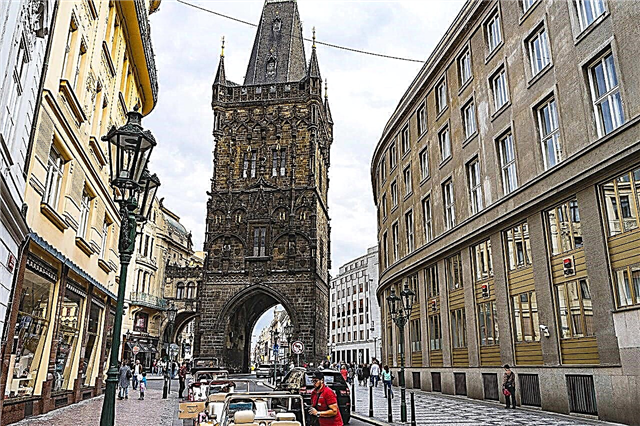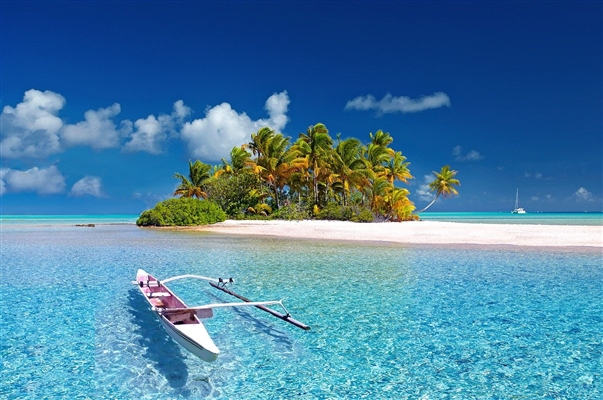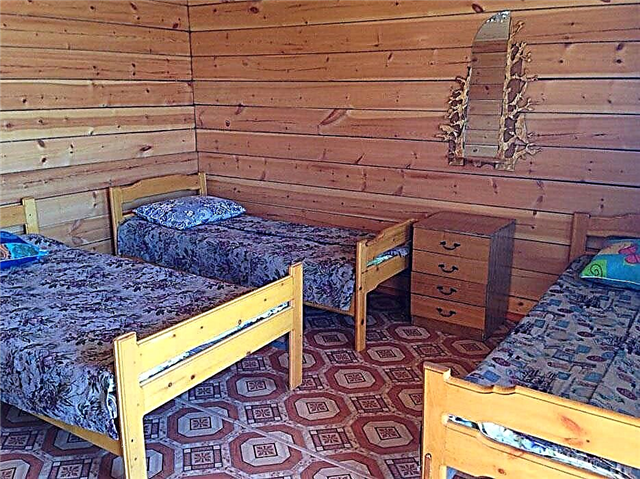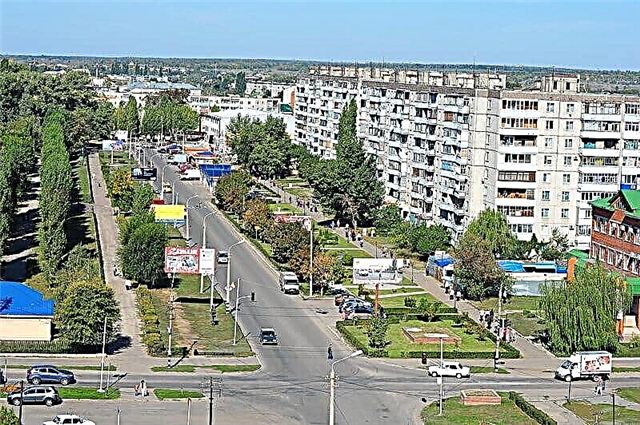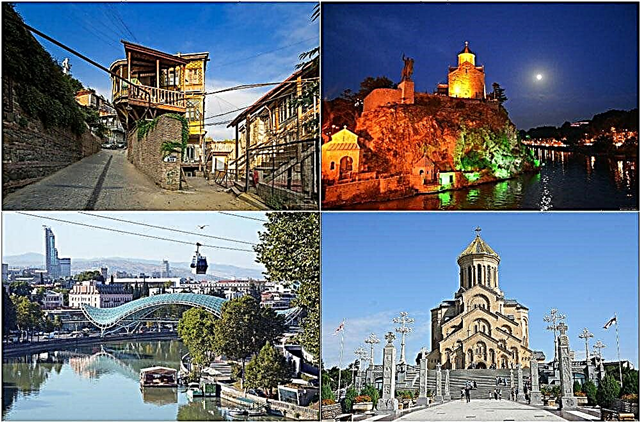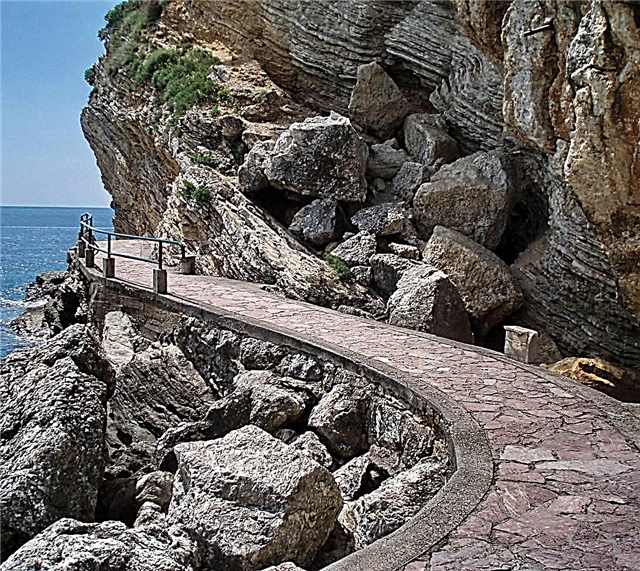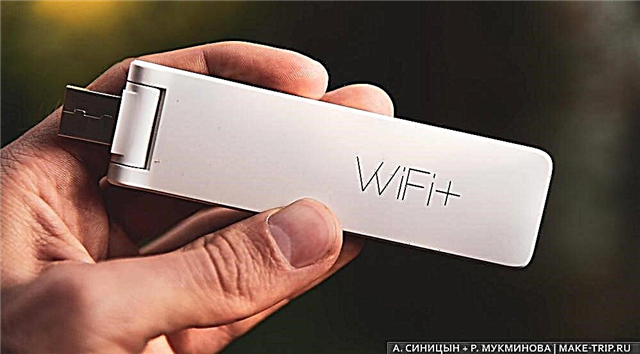The sights of the Tyumen region are varied and very attractive. The museums here are not organized for show, their collections are really valuable and interesting. The "City Duma" stands out with its paleontological collection. In cities, on almost every street you can find an architectural monument. The restored religious objects, already opened or preparing to receive parishioners, amaze with their fundamental nature.
Local lakes are real treasures for those wishing to improve their health. Moreover, modern sanatoriums are built right on their coast. Archaeological monuments, of which there are hundreds in the region, should not be ignored. Family vacation or sightseeing tour - any trip to Tyumen, Tobolsk and other settlements will bring a lot of impressions.
The most interesting and beautiful places in the region
List, photo with names and descriptions of popular attractions of the Tyumen region!
Tobolsk Kremlin
In total, it was built for more than a century, starting in 1683. There are no other stone kremlin beyond the Urals. The location of the city also affected the functions of the fortress, which did not have a special protective purpose. The city authorities insisted on its creation, having sent proven architects. All buildings, starting from the walls, are white stone. The complex includes the Sophia-Assumption Cathedral, the Gostiny Dvor, the monastic building, the bishop's house, the court building, the bell tower, the consistory building and other objects. Only 7 towers have survived, the height of each is at least 11 m, all have been restored. The Kremlin is included in the list of objects of cultural heritage of the Russian Federation.

Abalaksky Znamensky Monastery
Founded in 1785 on the right bank of the Irtysh. The construction of the monastery began with the appearance of the icon of the Mother of God. A small church was built for her made of wood. Gradually, stone temples appeared around, which were combined into one monastic complex. In the 1930s, it was closed, and the premises began to be used for other purposes. After the return of the land to the Russian Orthodox Church in 1989, reconstruction was carried out, and the monastery began to work.

Tourist complex "Abalak"
Located on the banks of the Irtysh in the village of the same name. Almost all buildings here are made of wood. Some are of practical importance, and there are decorative ones. Leisure: sauna, cafe, banquet hall. Show programs and folk festivals are held on holidays. In winter, you can ride cheesecakes, ice skates, snowmobiles, deer. The hotel is also semi-antique, although the rooms have a TV, minibar and other modern conveniences.

Provincial Museum of Tobolsk
It is considered the first in Siberia, since it was founded in 1870. The building was built later; local residents collected money for it. During the reign of Nicholas II, the museum was the center of the cultural life of the region. The collection is diverse, there are exhibits dedicated to museum work, bone carving, archeology. Not far from the entrance there is a sculptural composition - a horse-drawn carriage.

Holy Trinity Monastery
Foundation year - 1616. Location - Tyumen, high Zatyumensky cape. The architectural ensemble includes temples of the main types: cubic, refectory, cruciform. The monastery was abolished in 1923, in the 40s it was partially destroyed. Since 1995, the revival of the male monastery began. During the construction work, the relics of Philotheus Leshchinsky were found, which are still kept in the Trinity Cathedral.

Yalutorovsky prison
It is located in the city of the same name and was built on the site where the center of Yalutorovsk used to be. The territory of one and a half hectares is fenced with walls with towers. Inside there are craft workshops, small shops, an event area, outbuildings. You can buy souvenirs and products of local craftsmen. Also, tourists will find traditional Russian treats and lessons in sewing, pottery, wood carving.

Cathedral of the Sign
A new stone building replaced the burnt down wooden church in 1786. It is the cathedral of Tyumen. In the post-revolutionary years, there were two short periods when the parish was closed. But after the end of the Second World War, the cathedral was returned to the believers, and services began to be held regularly. In 2003, there was a campaign to raise funds from local residents to replace domes and crosses.

Lake Akhmanka
Located in the Nizhnetavdinsky region. The reservoir is famous for its eight-meter deposits of mud. Moreover, the layers have different colors. Discovered the medicinal properties of the lake in 1918. The reason was the unusual behavior of animals, they came here to heal wounds. The dirt has a protein base, so you need to be careful with its heat treatment. A medical center "Akhmanka" was built not far from the coast.

Ingalskaya valley
The area in the south of the region, where extensive archaeological excavations were carried out. 177 burial mounds were excavated. After themselves, the researchers left 55 archeological monuments and 5 natural monuments. Tourists have free access to them. The finds date back to different eras, from the Stone Age to the Middle Ages. In 2015, the Ingala sanatorium and spa hotel was built nearby.

Lovers' Bridge
Built across Tura in 1979 on the site of its wooden predecessor. In 2003, a resounding reopening took place after a major renovation. There is a clock on the bridge. The backlight comes on at night. On one side of the river, below the bridge, there is a stone embankment. There is a photo zone “I love Tyumen” and an art object “Happiness” on it. A popular walking spot for both locals and tourists.

Siberian Cats Square
It appeared in 2008 in Tyumen and occupied an area of half a hectare. The name was chosen through a general competition. On several pedestals there are figures of golden cats. The idea itself appeared long ago and was based on post-war history. After the blockade, there were no cats left in Leningrad, and the city was flooded with rats. About 5 thousand animals were sent from Siberia to the northern capital. A square was laid out in their honor.

Museum of Local Lore "City Duma"
Located in Tyumen in a 19th century building with two exhibition halls. Tourists can get acquainted not only with permanent exhibitions, but also with funds of other museums and private collections. "Window to Nature" is the exhibition most demanded by visitors. She talks about the flora and fauna of the area. There is also a paleontological collection, which includes the complete skeletons of a mammoth, bison, rhino and more.

Art Museum
Opened in Tyumen in 1957. Initially it was an art gallery, but later the profile changed somewhat. A collection of portrait painting, a collection of paintings by Western European artists of the 17th-19th centuries, Soviet samples of sculpture and graphics are the basis of the exhibition. Among the decorative and applied arts are the porcelain of the Imperial Factory, objects from Tobolsk carved bones and clay toys.

Maryino gorge
Located on the border with the Kurgan region on the Iset river bank. The depth of the natural ravine is about 60 m. The name was allegedly given in honor of a girl who was killed here in the civil war. There is a spring in the gorge, and its slopes are quite steep. Vegetation is abundant during the season, some species of flora are rare. A nearby attraction is the Ingalskaya Valley, where there are many archaeological sites.

Lake Small Taraskul
Located 23 km from Tyumen. The reservoir is popular for its mineral springs and curative mud. The sanatorium of the same name has been opened on the shore of the lake. Complex treatment is practiced here. Water is used not only for drinking, but also for showering, rinsing, and compresses. The area has places for walking, pine forest, sunbathing areas. All this helps with stress, neuroses, heart problems.

Salt lake
It can be found a kilometer from the village of Okunevo. The high salt content made the reservoir dead. Because of this, there are no fish here. But the local mud has become medicinal. They help with gynecological and skin problems, diseases of the musculoskeletal system. Water is also used for disease prevention and is consistent with similar sources in Kazakhstan and Bashkortostan.

Mosque of Nigmatulla Khadzhi in Yembaevo
Built in the 80s of the XIX century. The work was financed by the merchant Karmyshakov-Seydukov. When ruined after the revolution, valuables and books suffered, but some of them settled in museums. Schools were organized in the building, religious events were not held until the end of the 80s. In addition to the mosque, the complex includes a library, a madrasah, a dining room, a hotel, and a kitchen. In the future, it is planned to build a branch of the university.

House-Museum of Grigory Rasputin in Pokrovsky
It is located in the Yarkovsky district since 1990. Its foundation is a private initiative of the Smirnov spouses. Rasputin was born in Pokrovskoye into a family of peasants. Only carved platbands remained from his house. Not far from the entrance, there is a memorial stone in honor of the visit of the royal family. The exhibits are objects of that era, as well as a few things that Rasputin himself used, for example, his chest and chair.

Ilyinsky monastery
It was first mentioned in 1620. Located close to the center of Tyumen. The first buildings were made of wood, gradually they were replaced by stone ones. By 1837, a two-tier bell tower appeared. At the end of the 19th century, a parish school was opened and the territory was fenced. With the advent of Soviet power, the monastery was closed, and the buildings were given over to a distillery. The restoration of the monastery began in 2003.

Ioanno-Vvedensky monastery
Founded in the village of Priirtyshsky in 1653. During the procession of the cross, the place for the construction of the monastery was allegedly indicated by the Mother of God herself. In the middle of the 19th century, the male monastery was transformed into a female one. A candle factory and an icon-painting workshop worked. The decline was associated with the coming to power of the Bolsheviks. After the monastery returned to its former status, long restoration work was carried out already in the 21st century.

Holy Cross Church
Built in Tyumen in the second half of the 18th century at the expense of parishioners. During one of the major renovations, the baroque decor was lost. In Soviet times, it stood without crosses, and inside there were workshops, a shooting gallery, a club, and so on. In 1993, divine services were resumed, the fence was replaced. The re-consecration took place five years later, and was conducted by Patriarch Alexy II.

Church of the Savior
It was first mentioned in 1624, but the current building appeared only two centuries later. Combines two architectural styles: Siberian Baroque and Pseudo-Russian. The building is massive with white walls, a green roof and small domes, which makes it stand out from the general urban background. The church stood idle after the revolution, and then restoration work dragged on. Should be operational from 2019.

Church of the Holy Trinity
A Catholic religious building in its present form appeared in Tobolsk in the early years of the 20th century. The local community consisted of former exiled Lithuanians and Poles. A community helping the poor worked at the parish. The architectural style is neo-gothic. In Soviet times, the temple was closed, rebuilt and the towers destroyed. Later, the premises of the dining room were transferred. Divine services resumed in the mid-90s.

Andreevskoe lake
The largest body of water near Tyumen. The area is about 3 thousand hectares. The depth is shallow, the bottom is uneven: areas with sand are replaced by areas with silt. There are recreation centers and camping sites on the coast. Since the water warms up well and quickly in the warm season, there are many vacationers. Excavations were carried out in the vicinity. Thanks to them, more than 30 archaeological sites have been discovered.

Ermak's garden in Tobolsk
City park related to the territory of Cape Chukman. In 1839, a monument to the "Conqueror of Siberia Ermak" was unveiled at this place. Around him and began to lay out a garden. It gradually took shape in its usual form by 1855. A greenhouse and a greenhouse were built nearby. A popular walking place for the townspeople. A beautiful view of the Tobolsk Kremlin opens from here. There are plans for the reconstruction of the park.

Tyumen State Circus
The construction of the building for the circus was completed in 2004. The performances of the permanent troupe took place earlier, since the beginning of the century, but the artists used tents. Later they got their own premises, but it was dilapidated and had to move out again. The current building is lit with lights at night, and a volumetric ball glows on its roof. Not far from the entrance there are sculptures of Popov, Karandash and Nikulin.

Museum "Kolokolnikov Estate"
The only surviving merchant estate in Tyumen. The external appearance of the building is a mixture of three architectural styles of Baroque, neoclassicism, Tyumen carving. The exposition tells the story of the house, as well as the family that lived here. The interiors have been preserved or restored, almost all things are originals. In addition, part of the exhibition is dedicated to trading houses of the late 19th and early 20th centuries.

Tyumen children's railway
Built near Andreevskoye Lake in 1969. The length is 3.8 km. Stops take place at 2 stations and 2 platforms. In addition to stations, there is also a DEPO for servicing trains and wagons. Tickets are purchased at the box office, and before the train arrives, you can spend time in the waiting room. There are educational and travel programs. The road works exclusively in the summer.

Tobolsk bone carving factory
The city is considered the center of bone carving in the country. The factory appeared in 1874 and gradually developed from a small workshop. Now souvenirs, miniatures, and decorations are produced here. A shop that looks more like a museum has been opened. The excursion can be ordered directly on the spot, but it is better by phone in advance. The guide takes visitors to the shops, tells the story of the origin of the craft and shows the work of the craftsmen.

Tyumen hot springs
A full-fledged resort that welcomes tourists all year round. The water temperature in the springs ranges from +36 to +45 ° C. Mineral water, the composition is rich in nutrients. There are several recreation centers. For example, "Upper Bor", where you can swim in the pool with mineral water and hydromassage. You can order both one-time visits and a set of procedures, and stay at a local hotel.


